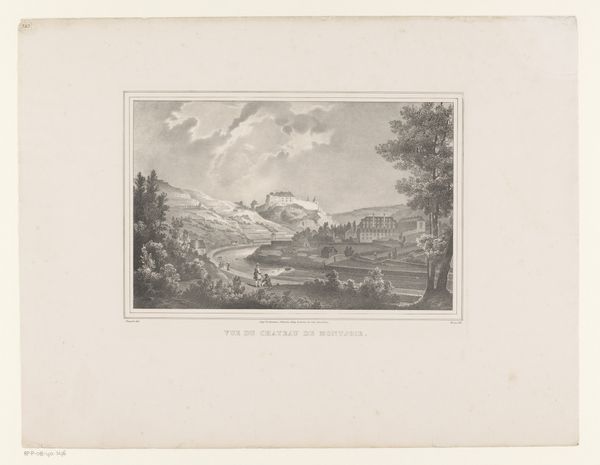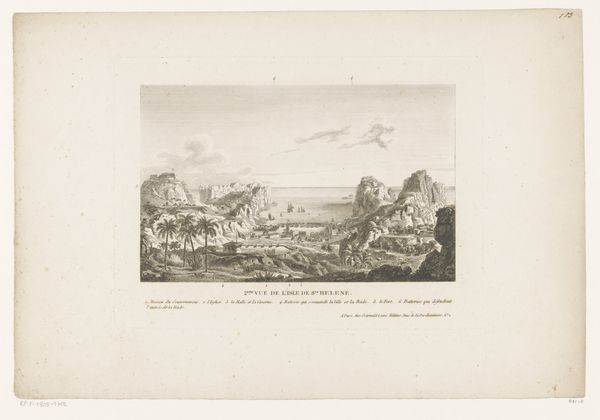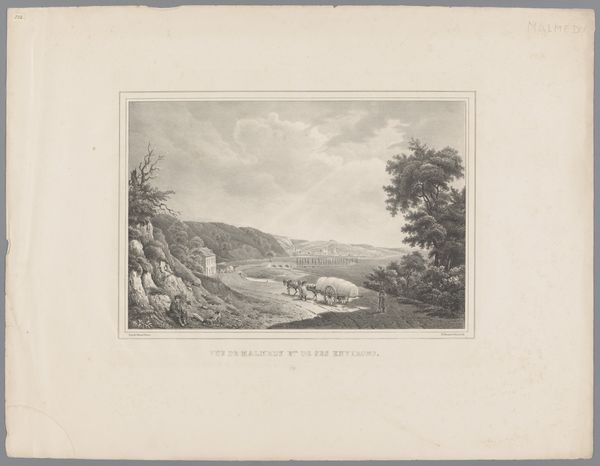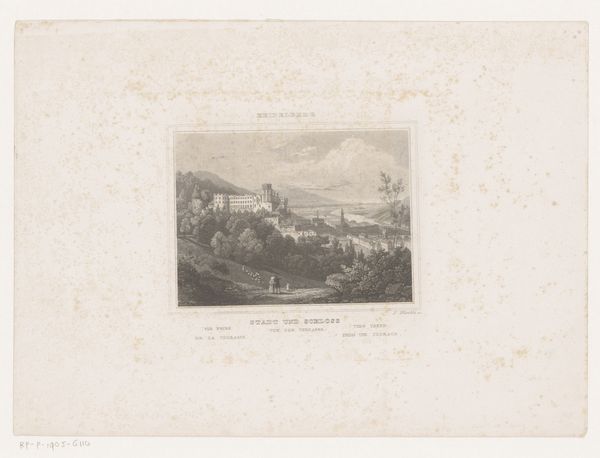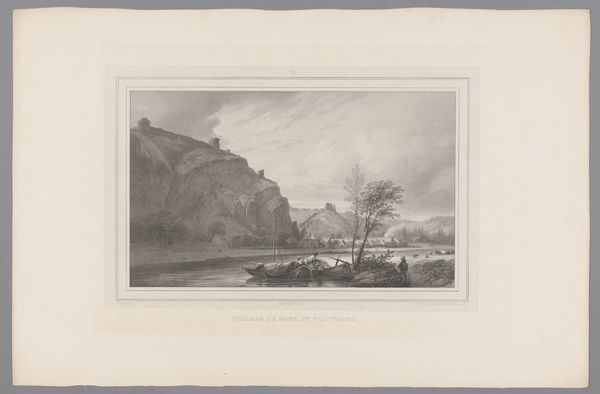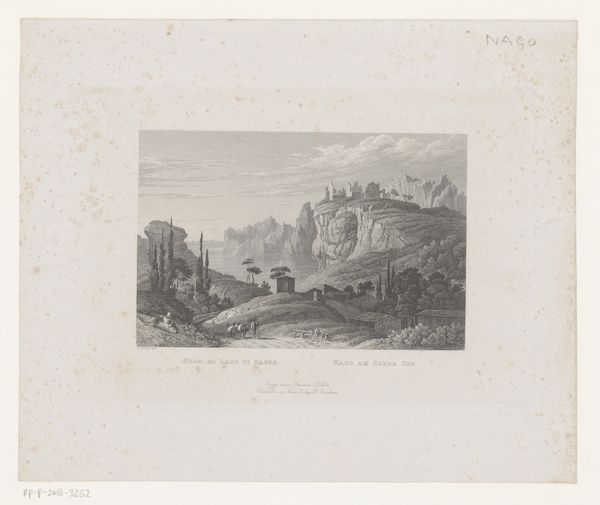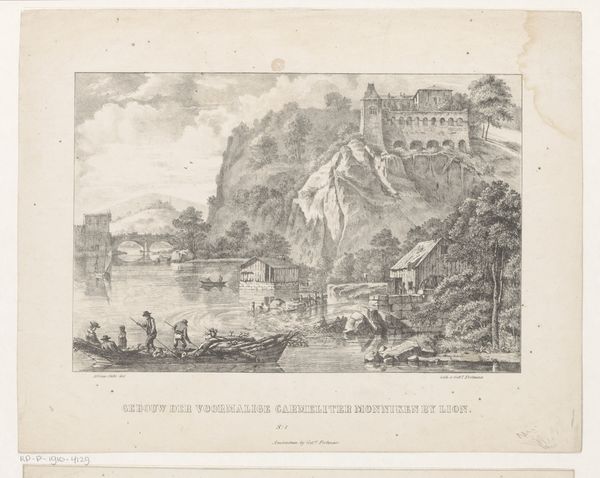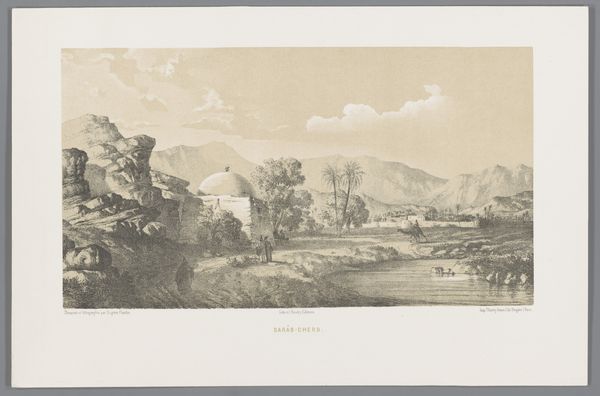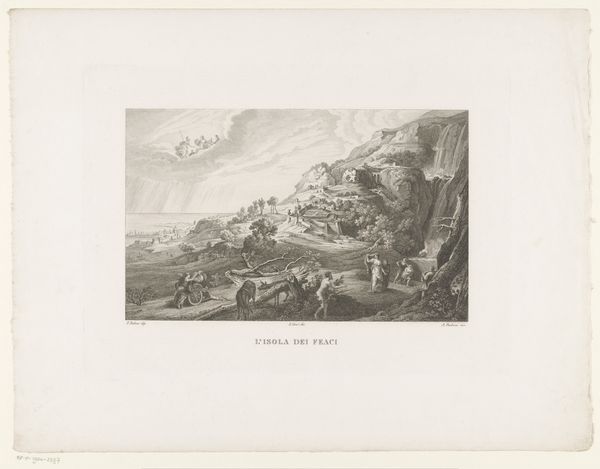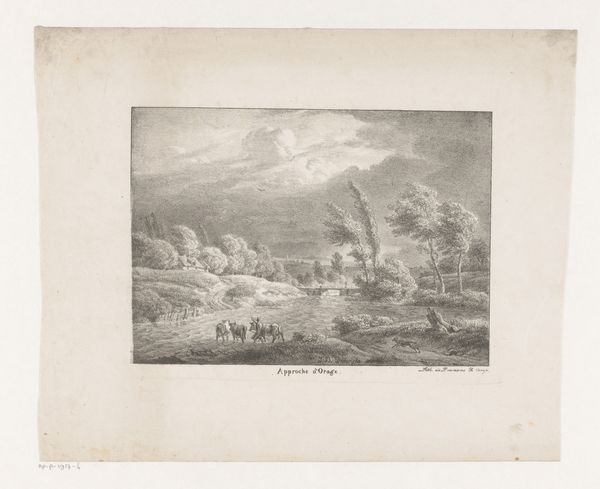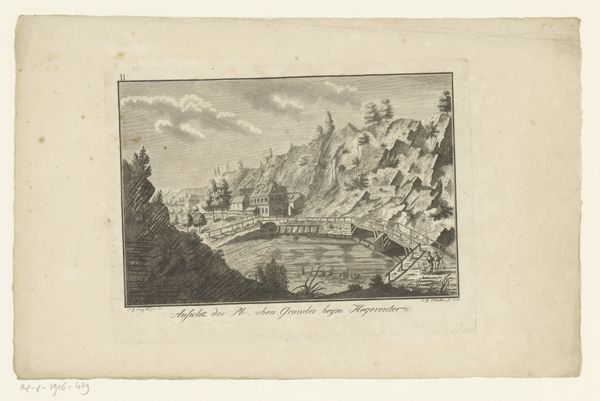
print, engraving
#
neoclacissism
#
narrative-art
# print
#
old engraving style
#
landscape
#
archive photography
#
history-painting
#
academic-art
#
engraving
Dimensions: height 135 mm, width 149 mm
Copyright: Rijks Museum: Open Domain
François Louis Couché made this print, Invasie van Quiberon, sometime in the late 18th or early 19th century using engraving. This process involves meticulously incising an image into a metal plate, which is then inked and pressed onto paper. The material of this print—paper—and the process by which it was made are critical to understanding its place in the world. Unlike a painting, which is unique, a print is made to be reproduced and disseminated. This allows for a wider audience, turning images into accessible commodities. Consider the social context: this print depicts a battle during the French Revolution. The very act of creating and distributing such an image was a political one, meant to inform, persuade, and shape public opinion. The labor involved in creating the print—the skilled hand of the engraver, the production of paper, the distribution networks—all reflect the changing dynamics of labor, politics, and consumption in revolutionary France. By examining the materials, making, and context of this print, we gain insight into the social and political forces at play.
Comments
No comments
Be the first to comment and join the conversation on the ultimate creative platform.

